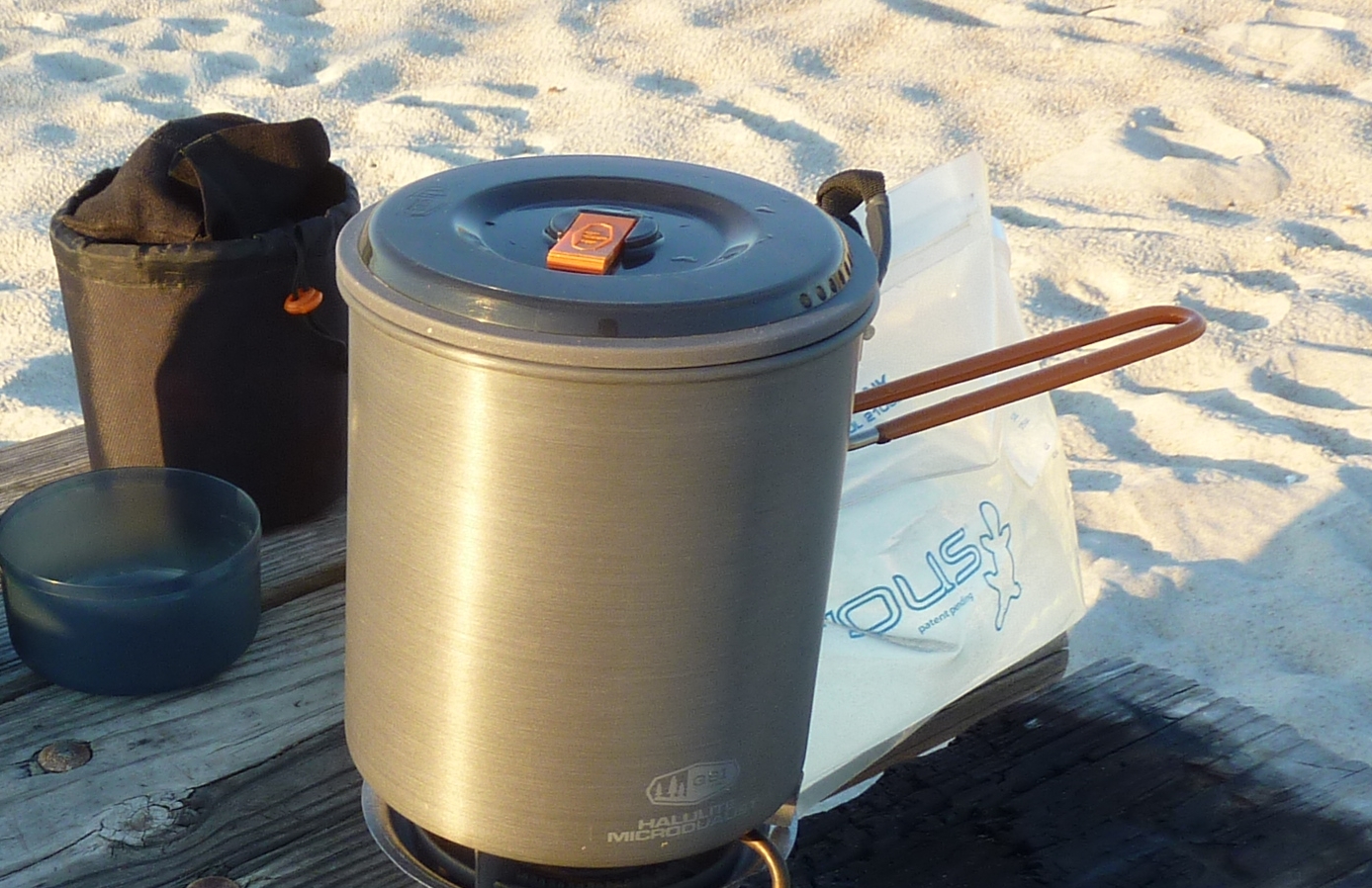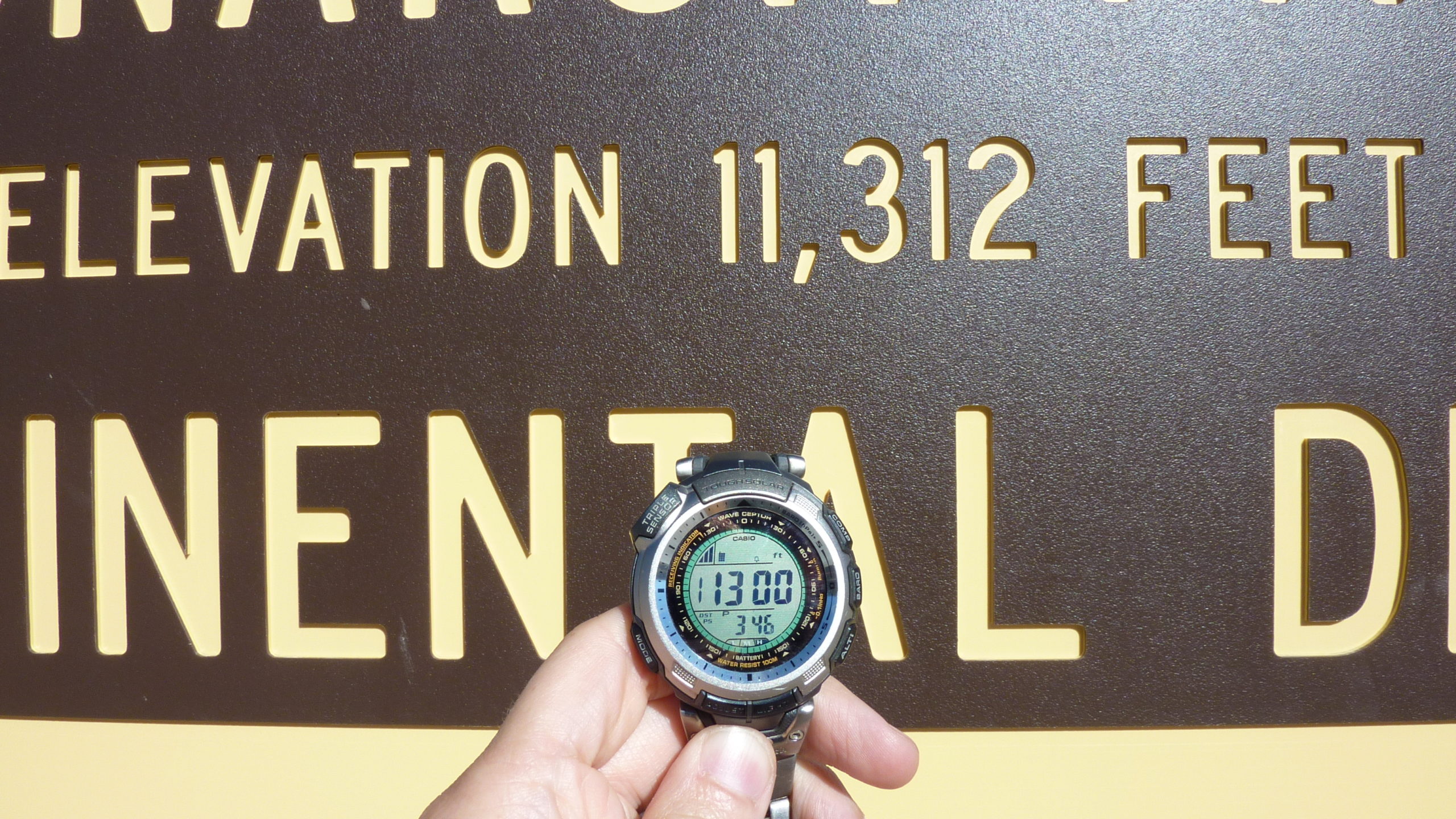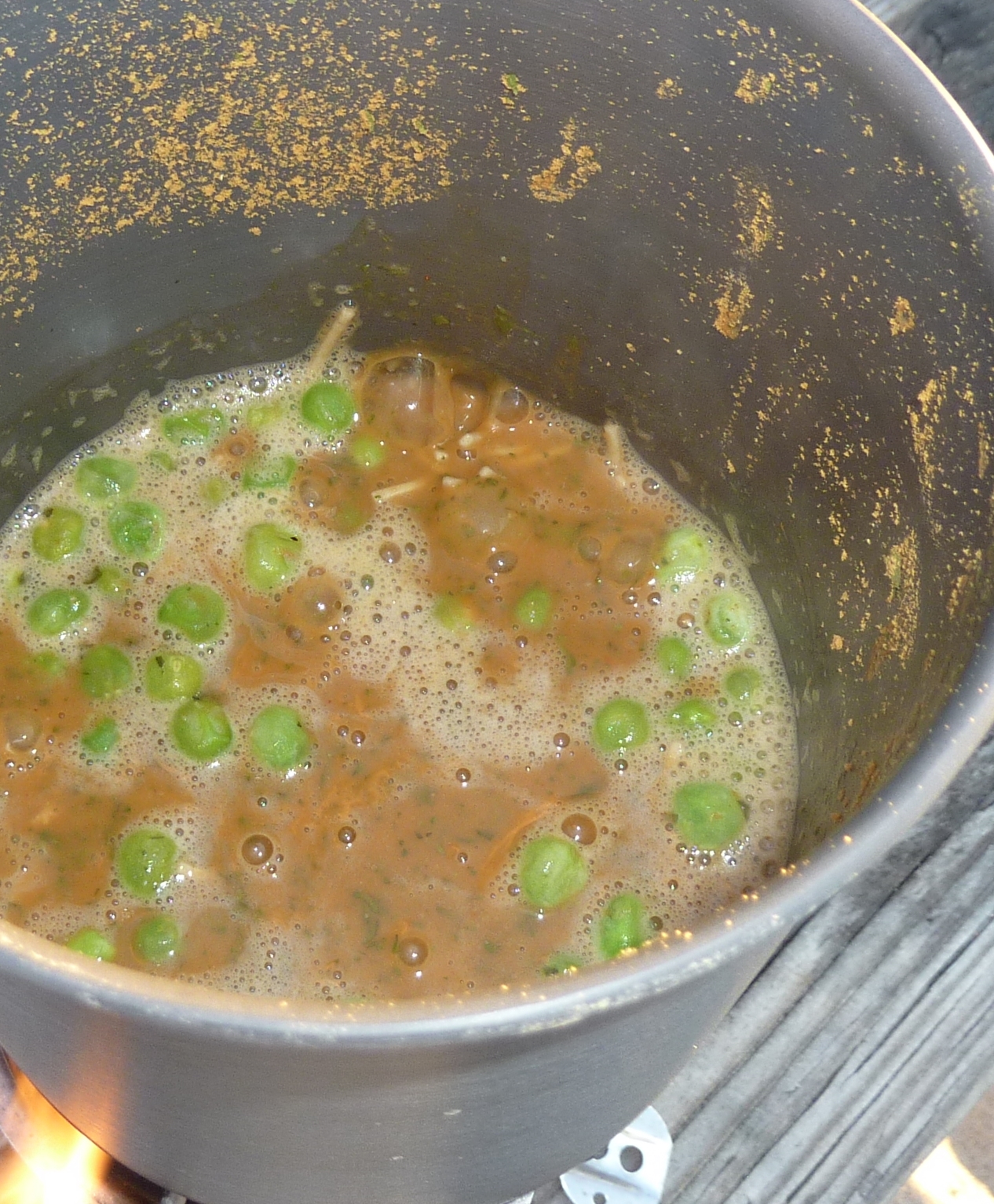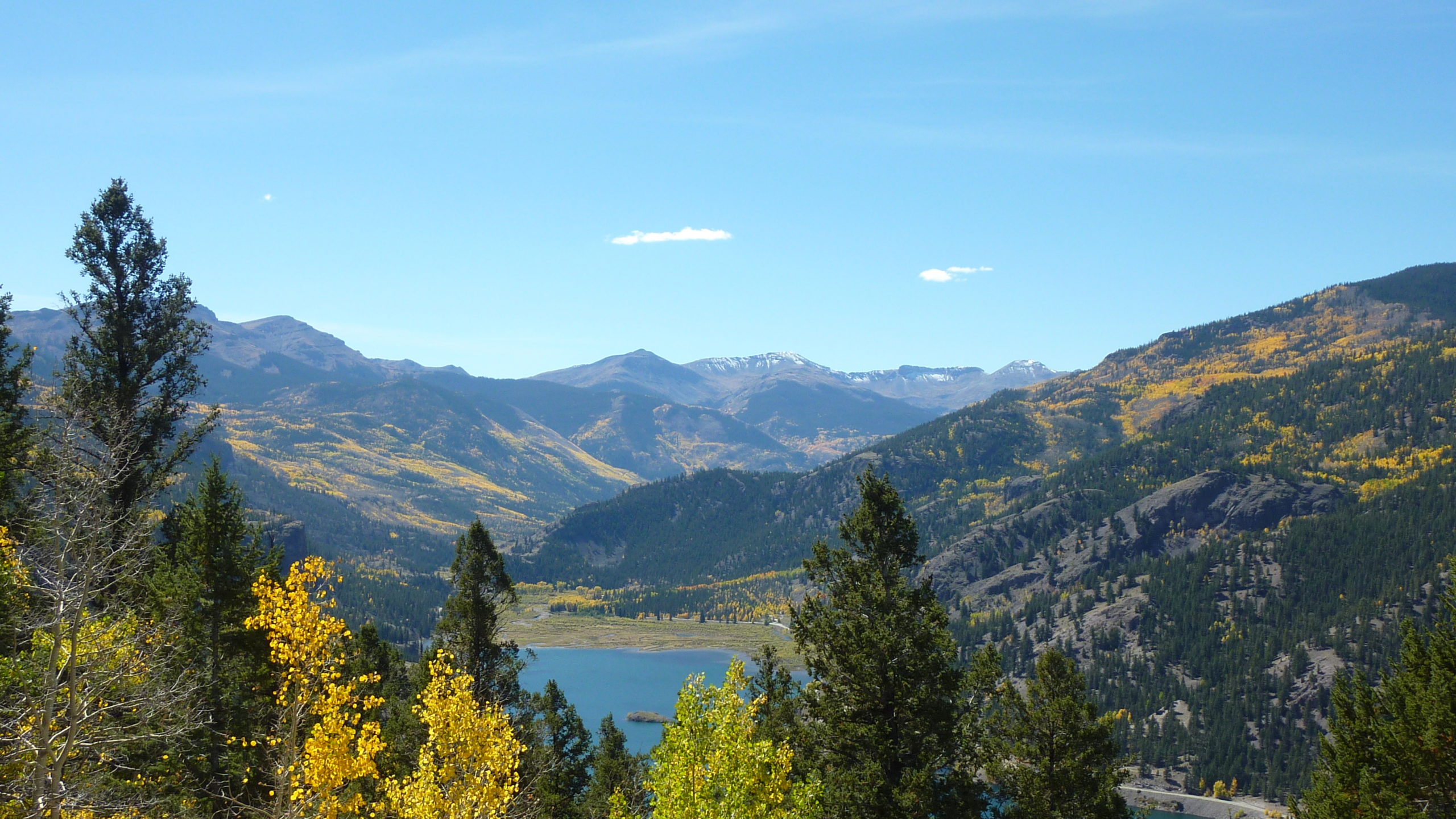
34% of the world’s population lives within 330 vertical feet (100 meters) of sea level
Chances are, you live in a part of the country that is lower in elevation, and pay no attention to cooking instructions intended for high altitudes. But one day, you may find yourself hiking more than 8,000 feet above sea level in the Sierra or Rockies, and wondering why your pasta is crunchy, or rice curry is watery. Preparing backpacking foods will require cooking adjustments at higher altitudes. High altitudes affect backpacking food preparation in two ways:
- Water and other liquids evaporate faster.
- Water boils at lower temperatures.
Baking at high altitude adds another set of complexities that we won’t cover here — as much as you crave cake or pizza on the trail, you aren’t assembling a cake or rolling out pizza dough out there. Thus, the only two variables you need to worry about for cooking at high altitudes are water and cook time. And if you are cooking the most efficient way we recommend, using the boil-soak method inside of an insulated container, you don’t need to worry about adjusting the amount of water. What you do need is extra time for hot soaking.
At altitudes above 5,000 feet, backpacking meals require a longer soak time.
The reason is due to atmospheric pressure at different altitudes. Pressure drops about 1/2 pound for every 1,000 feet of climb. At sea level, atmospheric pressure is 14.7 pounds per square inch (psi). At 5,000 feet, it’s 12.3 psi, and at 10,000 feet, only 10.2 psi. The lower air pressure at higher altitudes causes backpacking stoves to boil water at a cooler temperature.
Approximate boiling temperatures of water and added rehydration time at various altitudes | ||
| Altitude | Boiling Temperature | Additional Hot Soak Time Needed to Rehydrate Dried Food |
| Sea Level | 212 degrees F (100 C) | 0 |
| 5,000 ft. (1,524 m) | 203 degrees F (95 C) | 1 minute |
| 7,500 ft. (2,286 m) | 198 degrees F (92 C) | 2 minutes |
| 10,000 ft. (3,048 m) | 194 degrees F (90 C) | 5 minutes |
| 20,000 ft. (6,096 m)* | 178 degrees F (81 C) | 15 minutes |
*Extreme elevations require specialized cooking equipment, such as portable pressure cookers or use freeze-dried/instant backpacking meals.

Cooking at High Altitudes
A “5-minute” one-pot backpacking meal prepared at sea level can take ten minutes to rehydrate at 10,000 feet. At sea level, the boiling point of water is 212° Fahrenheit or 100 Celsius. But as altitude increases, the pressure drops, and so does the temperature of the boiling point. Thus, dehydrated and freeze-dried meals that need to be reconstituted by boiling water and hot soaking will do so at a much lower temperature than at sea level. The lower boil point temperature means you will need to allow more time for foods to soak. Otherwise, meals will turn out watery and crunchy – particularly those containing pasta, instant rice, and dehydrated vegetables. Differences are noticeable at elevations above 5,000 feet (1520 meters).
Backpacking meals are watery or crunchy if not adjusted at higher altitudes.
 At higher altitudes, pasta and other noodles may be more al dente than you like. Saucy meals will seem watery, and the dehydrated vegetable pieces may have a texture that is more leathery or crunchy. Because the boiling water is less hot at a higher altitude, more time is required to soften dried foods. How much longer?
At higher altitudes, pasta and other noodles may be more al dente than you like. Saucy meals will seem watery, and the dehydrated vegetable pieces may have a texture that is more leathery or crunchy. Because the boiling water is less hot at a higher altitude, more time is required to soften dried foods. How much longer?
- Add 1 minute of cook (soak) time for every 1,000 feet of elevation gain above 5,000 feet. This is a guideline that works based on our testing of dried meals. Unfortunately, there are no scientific “formulas” for adjusting cook times, and only repeated trials can determine the most successful adjustments needed.
- Water (liquid) evaporates faster at boiling temperatures. Adding water is necessary to account for loss from evaporation due to drier air. If cooking with a lid, you do not need to add more water. If cooking without a cover, increase the amount of water gradually (for every 1 cup add 1-2 TB per 5,000 feet).
Therefore, if you are boiling water at high elevation in a sealed pot with a lid (as you should do to preserve fuel), the only change required is the soak time—no big deal.
Hot beverages and food will be warm instead of piping hot.
Soups, coffee, tea, and hot chocolate will not be as hot. Sip these beverages inside your tent or use a pot insulator (details below) to keep the water extra hot while it is steeping.
Insulate

At higher elevations, the air tends to be colder and windier, making cooking more challenging. It is crucial to maximizing the thermal efficiency of your stove by shielding the flame from the wind and keeping the pot insulated. A lid, windscreen, and pot insulator go a long way for keeping food hot. These items can all be made of heavyweight aluminum (the most affordable way is to buy a large oven liner and cut to size). Aluminum foil may work temporarily but is not recommended because it is too thin and crumbles easily. See here for DIY designs.
- A good insulator can mean the difference between a hot meal and a warm meal, which is especially useful during winter. If the air is cold, add an insulator (cozy) around the pot to keep the food hot while it is soaking. A pot cozy retains heat and saves on fuel, eliminating the need for simmering on a stove. The cozy should not be on the pot while it is boiling; otherwise, it may melt. Add the insulator after the water has boiled and the pot removed from the stove. Most camping pots (i.e., titanium, aluminum), are decent insulators by themselves and are undoubtedly superior to the plastic bags you might pour boiling water into. A pot cozy can be made using a flexible reflective material (in the USA, look for “Insul-Bright” a mylar/polyester fabric that sells for $5.99 per yard). They can also be made from an auto windshield sunshade. See how to make a cozy using a reflective sunshade. You can also insulate your pot with items you already have with you, such as your jacket, hat, etc. Clothing won’t work as well but is still better than no insulator at all. Outdoor Herbivore also sells insulated cozies that keep backpacking meals up to 30% hotter during meal rehydration.
- Always cover the pot with a tight-fitting lid. High altitude areas often contain lower humidity, which causes the moisture in foods to evaporate more quickly during cooking and cause cooling. Covering foods during cooking will help hold in moisture, reduce your fuel consumption, and time-to-boil.
- If you do not have a lid, you can easily make one using an aluminum pie tray from the supermarket. The DIY cover will be light and will not seal perfectly, but is better than nothing at all. Place your pot grips on top of the lid to prevent the lid from popping up and allowing steam to escape, if needed.
- Adding salt can help shorten the time for water to boil, but only minimally. In fact, salt, sugar, and practically any other water-soluble substance increases density, which elevates the boiling point (so it boils at a higher temperature) and therefore shortens cooking time. This may seem like a solution for increasing the boiling temperature at higher elevations, but the effect of salt is negligible. The difference in temperature between unsalted and salted water at culinary concentrations (i.e., one teaspoon of salt per quart of water) is about 1°, which is barely noticeable or beneficial at high altitudes.
- At extreme altitudes above 18,000 ft (5486 m), a typical backpacking cook-set is not going to reach a temperature high enough to cook a hot meal. To compensate for the lower boiling point of water, the cooking time must be increased to such an extent that it is impractical. You could be waiting several hours to rehydrate a dehydrated meal. And turning up the heat will not help cook food faster. No matter how high the cooking temperature, water cannot exceed its own boiling point — unless a pressure cooker is used. Portable pressure cookers boil water at a temperature high enough to soften dried foods, and a hot meal can be enjoyed. A pressure cooker works by trapping the steam that escapes from the boiling water, thereby raising the pressure so that the water boils at a higher temperature. A typical pressure cooker applies 15 pounds of pressure, which increases the boiling point of water to 250 degrees F (121 degrees C) at sea level. Look for small, lightweight pressure cookers that are designed for mountain climbers. Consider packing mostly cold soak, high carbohydrate meals, or make hot meals made with only freeze-dried ingredients (not dehydrated) to conserve fuel during rehydration. Eating cold-soaked foods and instant snack foods allows you to use stove fuel for melting snow for drinking versus both cooking and drinking. You can view Outdoor Herbivore’s cold soak backpacking meals here by filtering the column Good for Cold Soak = Y.

Appetite and Altitude
Altitude can impact your appetite. As your body adapts to a higher elevation, it is normal to experience a decreased appetite. While it is okay to eat less, you still need to eat even if you are not hungry. The best type of food to consume is carbohydrates, which require less oxygen for metabolism and digestion. See also our tips on preventing altitude sickness.
So remember – when you are hiking at altitudes above 5,000 feet (1,524 m), and your hot trail meal come out too watery, the most likely cause is that you didn’t allow the meal to soak long enough to absorb the water. Even at higher altitudes and colder temperatures, there is really no need to simmer your food. Often, just a few more minutes of additional soak time is all that is needed. And when it gets cold and windy, pot insulators are useful for keeping things extra hot when soaking.
Want more cooking tips for the trail? See Outdoor Herbivore’s Complete Guide to Cooking Foods on the Trail

Article sources:
www.pnas.org/content/95/24/14009.full
www.fsis.usda.gov/wps/portal/fsis/topics/food-safety-education/get-answers/food-safety-fact-sheets/safe-food-handling/high-altitude-cooking-and-food-safety/ct_index
whatscookingamerica.net/boilpoint.htm
zenstoves.net
One thought on “Cooking Dried Foods at High Altitude”
The steam cooking equipments are imperative in the preparation of healthy and delicious food. It takes lesser time to cook food and thus you can save an ample amount of time with the aid of these equipments.